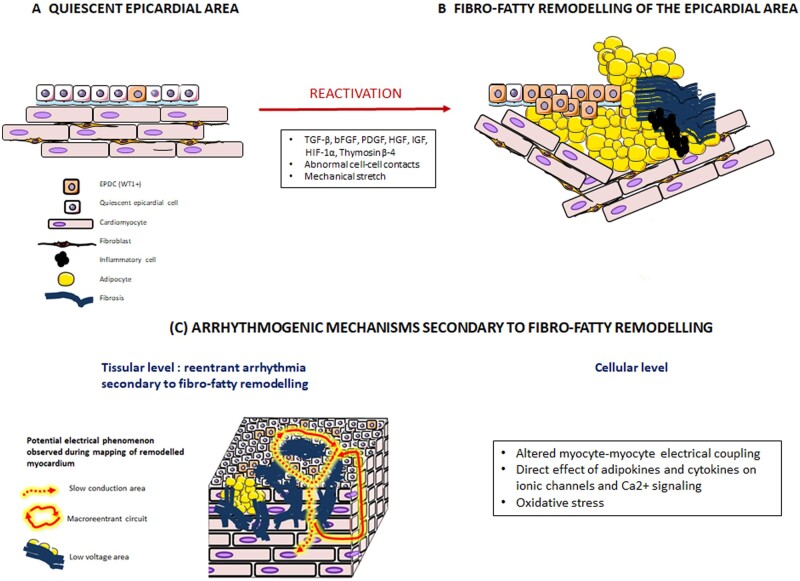Graphical Abstract.
From the reactivation of the epicardium to the formation of an arrhythmogenic substrate. Transition from a quiescent epicardium (A) to epicardial reactivation followed by fibro-fatty infiltrations of subepicardial myocardial layers (B). Potential arrhythmogenic mechanisms (C) include (i) at the tissue level, conduction slowing or block and low-voltage area favouring formation of electrical reentry circuit within the myocardial wall and (ii) at the cellular level, altered myocyte coupling and adipokine- and cytokine-induced abnormal excitation contraction coupling and oxidative stress.

